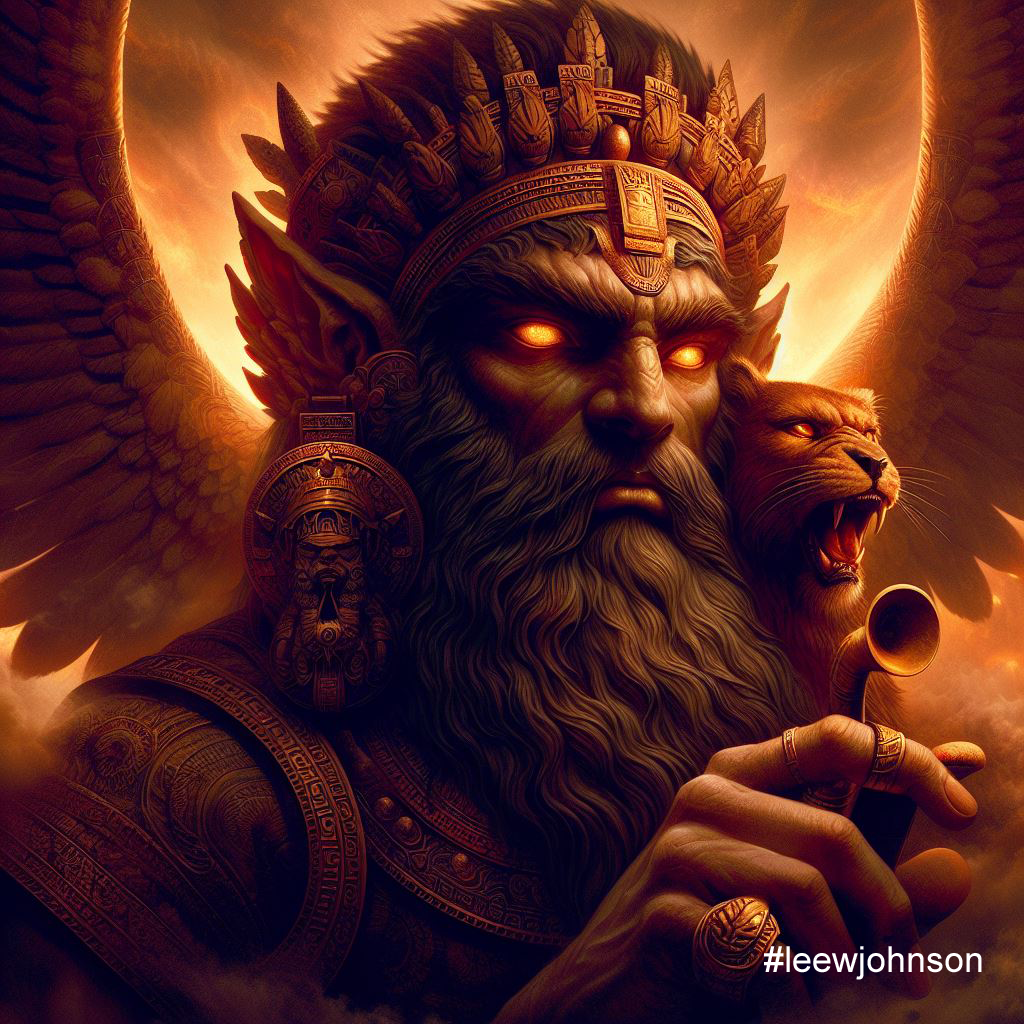Nergal

Correspondences:
Major cult center: Kutha
Abode: Kur (the Mesopotamian underworld)
Planet: Mars
Symbol: lion-headed mace, sword, lion, bull, possibly chameleon
Number: 14
Parents: Enlil and Ninlil
Siblings: Nanna, Ninazu, Enbilulu (in the myth Enlil and Ninlil)
Consort: depending on region and myth, could have been Laṣ (most commonly), Mammitum, Admu, Ereshkigal, or Ninshubur
Children: Tadmushtum
Various Equivalents:
- Southern Mesopotamian: Ninazu
- Akkadian: Erra
- Eblaite and Ugaritic: Resheph
- Elamite: Simut
- Mandaean: Nirig
Holy Day: Summer Solstice
Animal: Panther
Colour: Yellow, Orange, Dark Red
Other: Blood, Ashes, Iron, Amarathe, Tobacco, Kratom, Alcohol, Cocaine
Another from Johan Weyer’s Hierarchy of Hell is Nergal, and is labelled as the chief of the secret police, whatever that may have meant in the 1500s.
A prominent deity in the pantheon of ancient Mesopotamia, Nergal is a figure who embodies duality, representing both destruction and protection. Known primarily as the god of war and plague, Nergal’s influence extended across various aspects of life and death, reflecting the complex nature of the Mesopotamian understanding of the divine.
Origins and Development
Nergal’s origins can be traced back to the early Sumerian civilization, where he was initially worshipped as a local god in the city of Kutha (modern-day Tell Ibrahim, Iraq). Over time, his worship spread throughout Mesopotamia, and he was assimilated into the pantheon of other cultures, including the Akkadians, Babylonians, and Assyrians.
In Sumerian mythology, Nergal is often associated with the Underworld, ruling over the realm of the dead alongside his consort, Ereshkigal. This association with the underworld underscores his role as a deity of death and the afterlife, governing the fate of souls after death.
Attributes and Iconography
Nergal is typically depicted as a fierce warrior, often brandishing a weapon, symbolizing his martial prowess and his role as a god of war. He is also represented with attributes associated with the underworld, such as a lion or a dragon, signifying his dominion over death and his fearsome nature.
One of the unique aspects of Nergal is his dual role as a bringer of plague and disease, as well as a protector against them. This duality reflects the ancient Mesopotamian belief in the gods’ ability to both inflict and alleviate suffering, a concept that is central to understanding Nergal’s worship and significance.
Myths and Legends
Several myths and legends highlight Nergal’s character. One of the most famous stories involving Nergal is his descent into the underworld and his marriage to Ereshkigal. According to the myth, Nergal initially defies Ereshkigal’s authority but eventually descends to the underworld, where he overcomes her through force and marries her, becoming the king of the underworld. This tale emphasizes his power and his ability to conquer even the realm of the dead.
Another significant myth involves Nergal’s role in the spread of plagues. In times of war and strife, Nergal was believed to unleash devastating diseases upon humanity, punishing them for their transgressions. Conversely, he was also invoked in prayers and rituals to ward off illness, showcasing his protective aspect.
Worship and Cult
The worship of Nergal was widespread across Mesopotamia, with numerous temples dedicated to him, particularly in the city of Kutha. His cult was characterized by elaborate rituals and offerings, aimed at appeasing the god and seeking his favour in both war and health.
One of the key aspects of Nergal’s worship involved rituals to prevent plagues. Priests and worshippers would perform ceremonies to invoke Nergal’s protection against disease, reflecting the ancient understanding of the divine’s direct influence on health and well-being.
Legacy and Influence
Nergal’s influence extended beyond the borders of Mesopotamia, impacting the religious practices of neighbouring cultures. His dual nature as a destroyer and protector resonated with many, and his worship can be seen in various forms across the ancient Near East.
In modern times, Nergal’s legacy continues to be explored in the fields of archaeology and mythology, and of course Daemonolatry. He stands out as a multifaceted deity, embodying the paradoxes of war and peace, life and death, health and disease. To add from Jehannum, he says, “Nergal can strengthen the intuition and magickal memory of the witch and engender the dissolution of the ego. He presides over necromancy, banishing, stellar magick, destruction rites, protective workings, blood magick, cleansing by water, cleansing by fire, and fire festivals.”